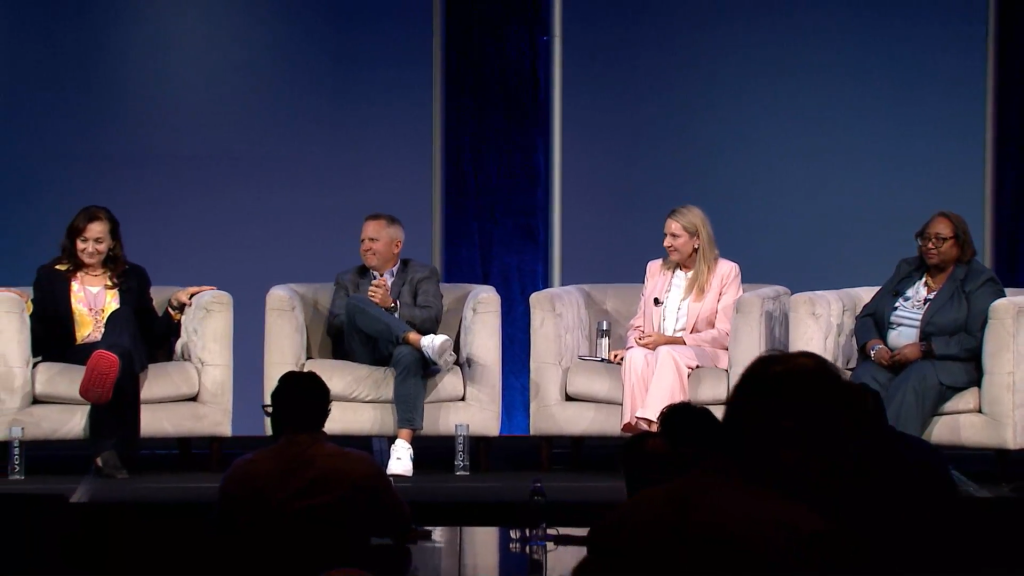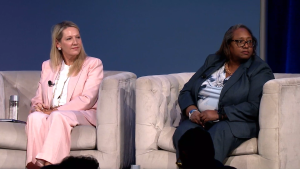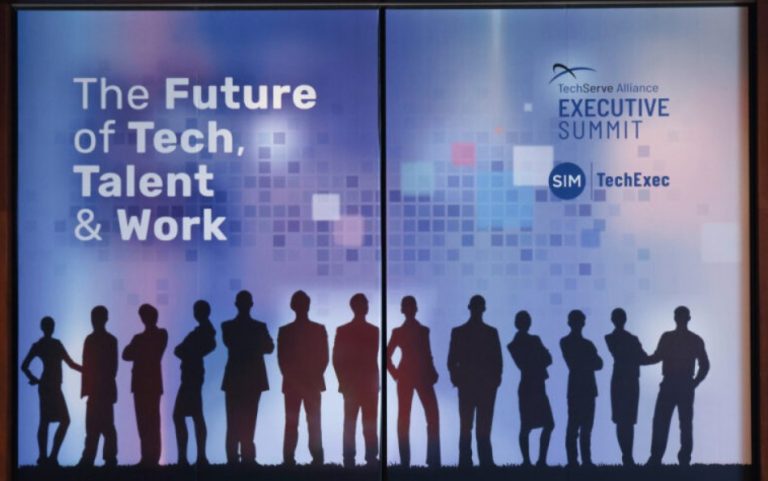As enterprises race into an AI-driven future, technology leaders are confronting talent challenges that are deeper and more complex than any previous transformation. During a panel at the 2025 TechServe Executive Summit, Joel Leege, President & COO, Red Oak Technologies, and President, BoD, TechServe Alliance, led a discussion with senior IT and talent executives on how AI is reshaping skills, organizational design, and hiring strategies. Their collective message was clear: AI is simultaneously the biggest risk and the biggest opportunity for the IT workforce of 2026 and beyond.

AI Readiness Starts With Data and Foundations
From the outside, AI can look like a tool conversation. But inside their organizations, leaders are focused on foundations—data, infrastructure, and operating models—before they can scale AI meaningfully.
Susan Malisch, Senior Vice President & CIO, American Medical Association, emphasized that the real bottleneck isn’t algorithms, it’s data. “One of the biggest challenges… is that most organizations’ data is not AI-ready yet,” Malisch noted. Technology vendors may be ahead, but internal teams are still doing the hard work of data enablement, governance, and integration.

At the AMA, that has meant building an AI working group, rolling out mandatory AI literacy training, and launching a private AI portal to give staff a secure environment to experiment. “Protecting our data is a key interest of ours,” Malisch said, underscoring why internal portals and clear policies are now foundational.
Kay Swift, Vice President, Information Technology, Penske Media Corporation, shared a similar sequence: before AI, she had to tackle tech debt. With multiple acquisitions and disparate systems, Penske needed stability and simplification. “We really weren’t in a position to full-force go AI,” Swift explained. She focused on eliminating roughly 75% of tech debt and streamlining infrastructure so the organization could even start to capitalize on AI opportunities.

As moderator, Leege framed it succinctly: AI is already everywhere in the workforce. “Seventy-five percent of knowledge workers are using generative AI tools, and 78% of them are bringing them into your office,” he said. The question is no longer if AI is being used, but how organizations manage the risk and harness the upside.
Governance, Guardrails, and Trust in an AI-Enabled Workplace
With AI usage spreading organically among employees, governance has become a strategic priority.
Swift, operating in a high-visibility media and publishing environment, is acutely aware of the reputational risk. “We don’t want to be the next Sports Illustrated… we have a lot of writers and editors who might be tempted to use AI to write our articles. That’s not the business that we’re in,” she said. Her approach is to proactively engage business leaders, understand what they want from AI, and then partner to deliver tools that meet both creative and compliance needs.
Malisch described the AMA’s journey from guidelines to policy. An AI working group, cross-business participation, mandatory literacy training, and a private AI portal are all part of a broader strategy to create “safe lanes” for AI usage. The organization’s policy explicitly directs staff to use internal tools when working with internal data and preserves the option to further restrict external tools as the landscape evolves.

On the talent side, Michelle Sims, CEO, YUPRO Placement, described how AI is now embedded into their contractor experience. “All of our contractors are required to sign an AI acknowledgment and usage policy,” Sims noted. YUPRO also offers an AI fundamentals course to its broader talent community, reinforcing responsible use while building baseline skills.
Graig Paglieri, CEO, Randstad Digital, added that governance expectations are now baked into client relationships. In industries like banking, Randstad sees AI codes of conduct and compliance terms regularly incorporated into contracts.
Skills Gaps, Mainframe Talent, and the Pressure on Experience
AI is amplifying existing skills gaps rather than closing them—especially in specialized and legacy areas.
Sims highlighted mainframe as a prime example. “The largest gap that we’re seeing right now is in mainframe talent,” she said. Many mainframe professionals are part of an older generation, and compensation is being driven up as organizations compete for shrinking expertise. “Institutional knowledge right now is very expensive, and it’s going to retire soon,” Sims warned. YUPRO is responding by building mainframe apprenticeship programs that blend on-the-job learning with structured training.
Paglieri sees parallel demand in platform integration and enterprise systems. Randstad Digital is investing heavily in talent communities around Salesforce, ServiceNow, Workday, and other platforms to keep pace with client needs. Speed and agility remain central: clients want “hyper-relevant” talent that can step into complex environments without long ramp-up times.
For Malisch, the complexity isn’t just technical—it’s operational and financial. She expects increased demand for roles like cloud engineers and FinOps professionals who can manage consumption-based pricing, model costs, and deal with the growing complexity of multi-tool AI ecosystems.
The Entry-Level Crisis and the Future of Middle Management
One of the most candid parts of the discussion centered on the erosion of entry-level opportunities.
Paglieri pointed to data showing that early-career roles are declining sharply and connected it to his own experience. “I remember starting in a consulting job I would never get today,” he said. That role was designed for new graduates and built on training, mentorship, and incremental responsibility—functions now increasingly handled by automation.
Sims shared a personal story about her own 24-year-old daughter, who has been applying for jobs for two years and repeatedly loses out to more experienced candidates. The result: she has shifted to fractional marketing work out of necessity. Sims worries about what happens next. If organizations don’t reinvest in early-career hiring and structured training, “middle management of the future is a little scary to me without investing in training and supports for entry-level talent,” she said.
Swift argued that some universities are unintentionally widening the gap by focusing heavily on coursework and not enough on practical experience and networking. Graduates often find themselves outmatched by candidates with even a year of hands-on work.
Leege sees this first-hand with his own daughters and their peers. “I’ve been shocked at how many I’ve had to help just get on LinkedIn and learn how to reach out to alumni,” he said. He’s even been asked by his alma mater to come back and teach networking skills—something he believes should be a core part of higher education, not an afterthought.
Human Skills at the Center of an AI Future
When asked to name the most critical missing capabilities, the panelists didn’t mention specific programming languages or AI frameworks.
Sims pointed to “discernment.” Swift answered with “logic.” Paglieri emphasized the “connection between technology and people.” Malisch summed it up as “critical thinking.”
Leege tied it together by labeling AI the “biggest IT talent risk in 2026—and also the biggest opportunity.” The difference, he suggested, will come down to how organizations intentionally design their workforces, invest in learning, and rethink how people enter and grow within the profession.
The IT workforce of 2026 will not be defined solely by the sophistication of AI tools, but by the ability of leaders to build data-ready environments, responsible governance, flexible talent models, and human-centered skills that AI can’t replace.












